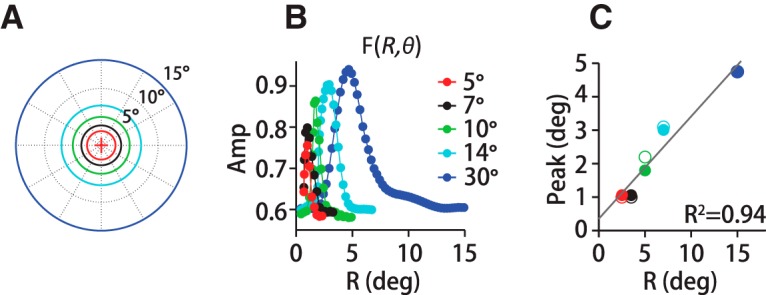Figure 9.

Spatial motion integration depends on stimulus size. A, We tested stimulus diameters from 5 to 30°, indicated by the colored circles. For each stimulus size, we measured the filter on the same polar grid, always centered on the eye's instantaneous position (+). B, The spatial filter, F(R), computed for each stimulus size (colored traces) for subject M1; the larger the size, the more eccentric the filter's peak. C, Foveal eccentricity of the spatial filter's peak scales linearly with stimulus radius, (f(x) = 0.30x + 0.35; R2 = 0.94). Closed circles indicate data from monkey M1; open circles M2.
